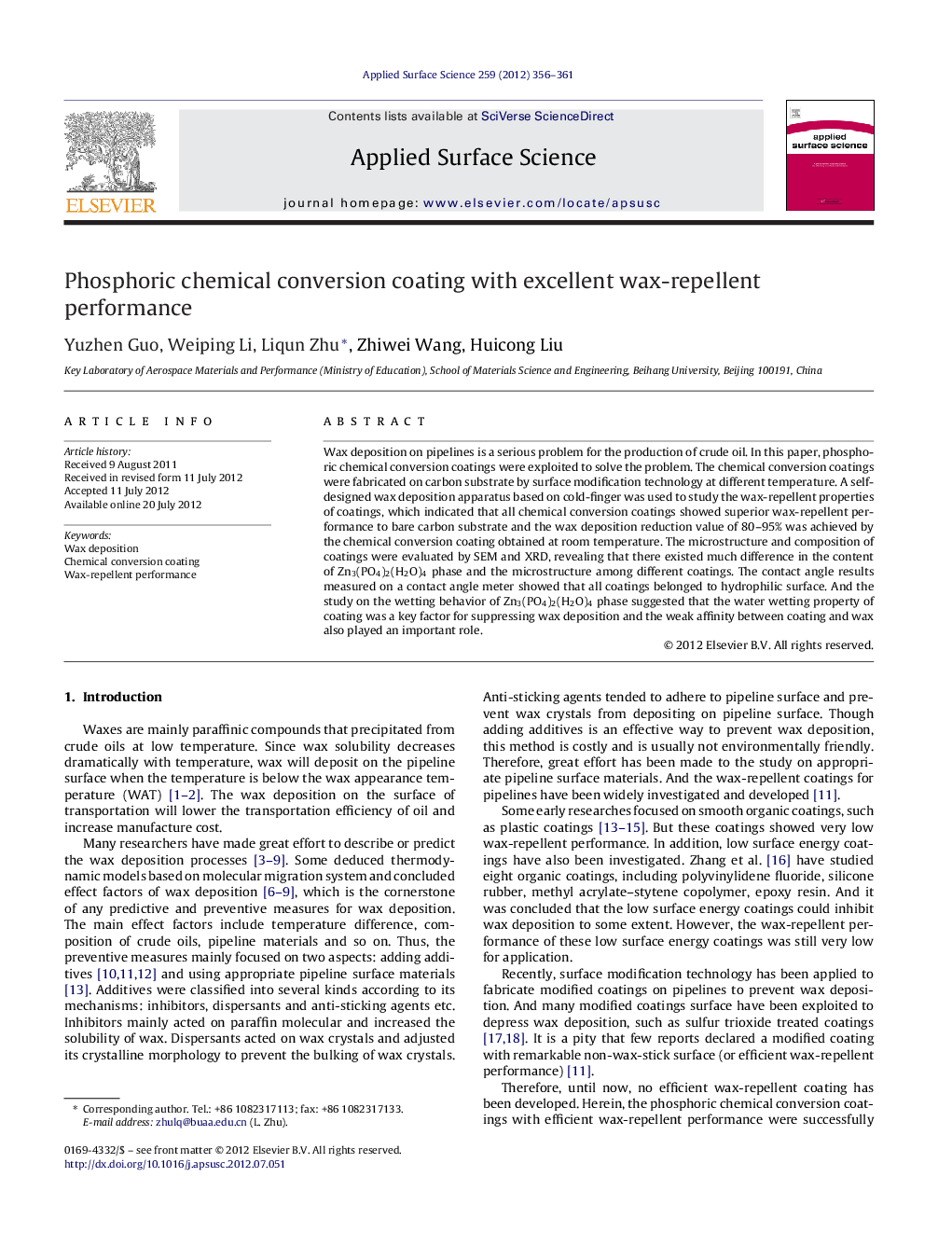| Article ID | Journal | Published Year | Pages | File Type |
|---|---|---|---|---|
| 5361471 | Applied Surface Science | 2012 | 6 Pages |
Wax deposition on pipelines is a serious problem for the production of crude oil. In this paper, phosphoric chemical conversion coatings were exploited to solve the problem. The chemical conversion coatings were fabricated on carbon substrate by surface modification technology at different temperature. A self-designed wax deposition apparatus based on cold-finger was used to study the wax-repellent properties of coatings, which indicated that all chemical conversion coatings showed superior wax-repellent performance to bare carbon substrate and the wax deposition reduction value of 80-95% was achieved by the chemical conversion coating obtained at room temperature. The microstructure and composition of coatings were evaluated by SEM and XRD, revealing that there existed much difference in the content of Zn3(PO4)2(H2O)4 phase and the microstructure among different coatings. The contact angle results measured on a contact angle meter showed that all coatings belonged to hydrophilic surface. And the study on the wetting behavior of Zn3(PO4)2(H2O)4 phase suggested that the water wetting property of coating was a key factor for suppressing wax deposition and the weak affinity between coating and wax also played an important role.
⺠A novel wax-repellent coating was developed. ⺠The coating takes h phase (Zn3(PO4)2(H2O)4) as primary composition. ⺠Water-wetting property of the coating is a key factor in suppressing wax deposition. ⺠The weak affinity between coating and wax is also important in reducing deposition.
